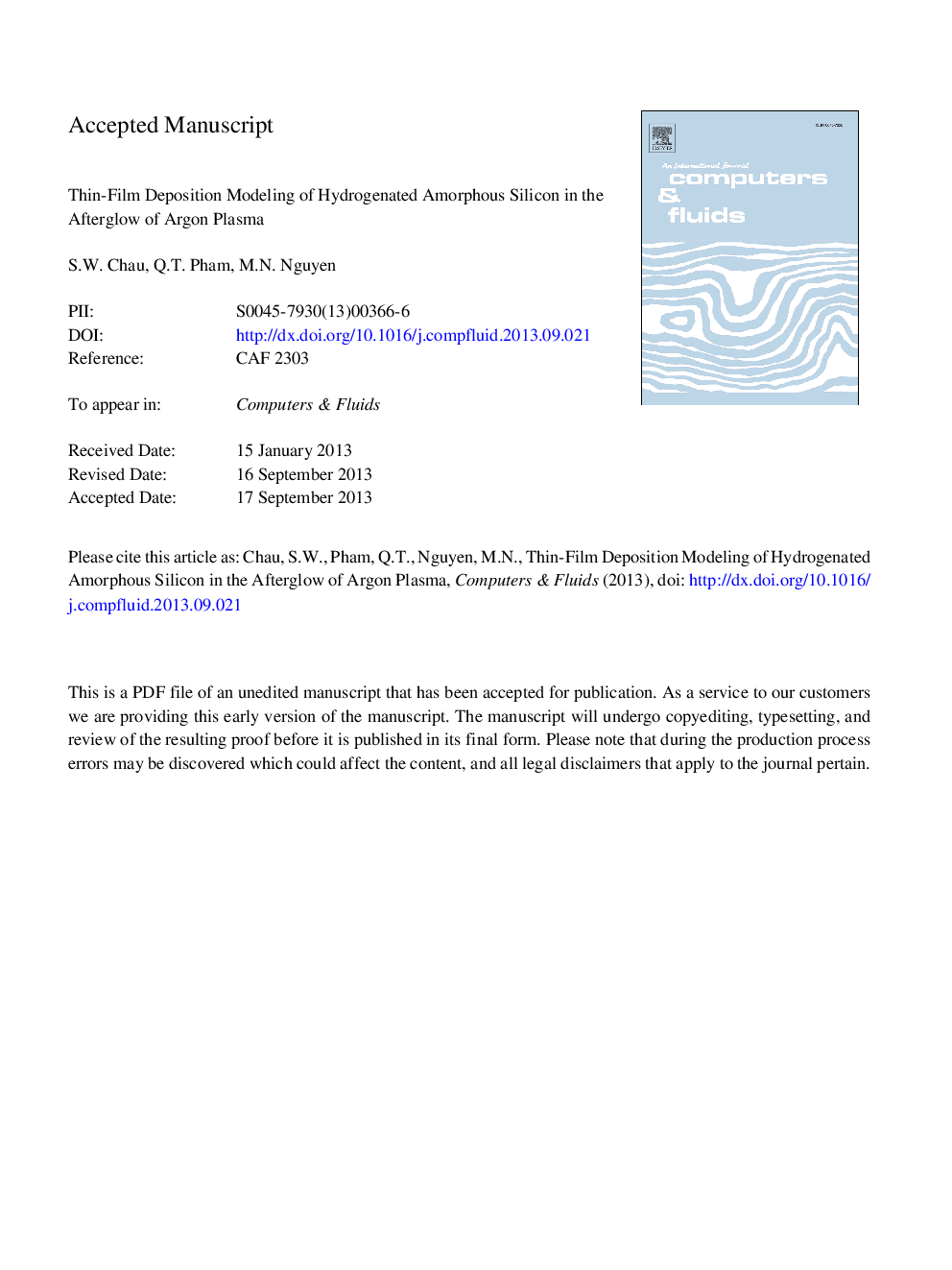| Article ID | Journal | Published Year | Pages | File Type |
|---|---|---|---|---|
| 7157416 | Computers & Fluids | 2013 | 50 Pages |
Abstract
This paper proposes an integrated numerical approach to model the thin-film deposition of amorphous silicon in the afterglow of argon plasma. The investigated plasma enhanced chemical vapor deposition (PECVD) process is governed by gas flow equations, chemical kinetics equations and surface reaction equations. Nineteen species, i.e. Ar, Ar*, Ar+, Si2H6, Si2H4, SiH4, SiH3, SiH2, SiH, H2, H, Si, Si+, SiH3+, SiH2+, SiH+, H2+, H+ and electron (e) are considered, where 52 chemical reaction equations are adopted to describe the reactions in space among silane, hydrogen and argon plasma. Continuity, momentum and energy equations are solved to describe the velocity, pressure and temperature field of gas flow in the process chamber, while the density of neutral species is calculated from the corresponding transport equation considering its convection and diffusion effect, as well as the production and destruction due to chemical reactions. The transport equations of charged species are modeled by a drift-diffusion approximation. The ambipolar diffusion is assumed for charged species in the afterglow of argon plasma due to the vanishing of external electrical field. The equation of energy balance for electron is applied to the estimation of the electron temperature in the process chamber. In this study, ten reaction mechanisms of thin film growth are taken into account. The species considered in the deposition process on substrates are silane, the free radicals of silane, hydrogen, hydrogen atom, silicon atom, the species with dangling bond on the substrate surface covered by active and the passive site. All governing equations are discretized by using a finite volume method and solved by an iterative approach. The variables, such as position, velocity and moment, are expressed by Cartesian coordinates, where the non-staggered variable arrangement is adopted to define field variables. The deferred correction approach is employed to approximate for both diffusion and source terms, where SIMPLE algorithm is used to decouple pressure and velocity. A parallelized numerical scheme is implemented via MPI library. Numerical simulations with different operation parameters are performed to show their influence on the deposition rate. The numerical results indicate the deposition rate exhibits a double-peak characteristic on the substrate and give an average value varying between 5Â Ã
/s and 10Â Ã
/s for the studied PECVD process in the afterglow of argon plasma.
Related Topics
Physical Sciences and Engineering
Engineering
Computational Mechanics
Authors
S.W. Chau, Q.T. Pham, M.N. Nguyen,
